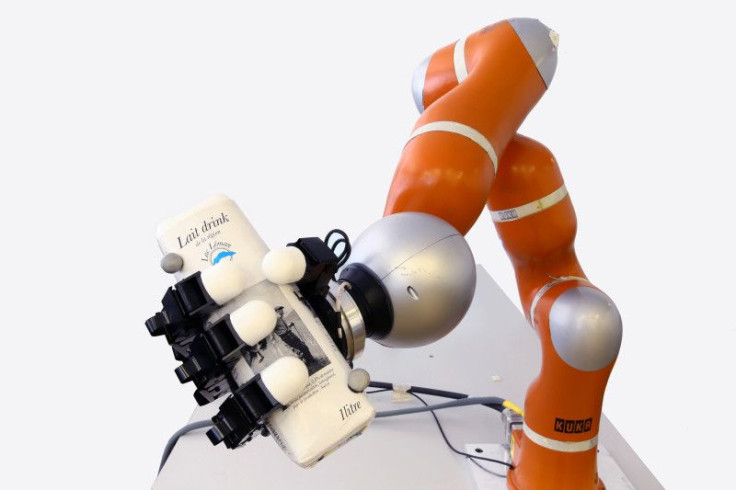Robotic Arm With ‘On The Spot’ Reflexes Could Aid In ‘Growing Problem’ Of Space Junk Cleanup [VIDEO]

They say you can’t teach an old robot new tricks -- or can you? Researchers in Switzerland have trained a robotic arm to catch various objects with split-second timing, and it could be just the thing scientists need to clean up fast-moving space junk in low-Earth orbit.
Using a new technique of “programming by demonstration” to teach a robot to react to incoming objects, scientists from the Swiss Federal Institutes of Technology in Lausanne, Switzerland, trained a four-fingered, three-jointed robotic hand to catch a ball, a tennis racket and a bottle thrown its way in less than five-hundredths of a second. The method relies on practice, repetition and a bit of trial-and-error, rather than calculations, to program a robot to respond to the world around it.
"Increasingly present in our daily lives and used to perform various tasks, robots will be able to either catch or dodge complex objects in full motion," Aude Billard, head of the team that developed the arm, said in a statement. “Not only do we need machines able to react on the spot, but also to predict the moving object's dynamics and generate a movement in the opposite direction."
The team’s research appears in the May 12 edition of the journal IEEE Transactions on Robotics.
Researchers favored the “programming by demonstration” technique to develop an object-catching robotic arm because preprogrammed behavior, they say, impedes the time it takes for a robot to respond. The team taught the robot to position itself by manually guiding the arm to several catching positions and synchronizing its finger movements to grasp the objects.
You can watch the handy robotic arm in action here, courtesy of the Swiss Federal Institutes of Technology:
As scientists look for new ways to address the alarming amount of space junk that has accumulated around Earth, a fast-moving robotic arm could offer a solution.
According to NASA, there are an estimated 500,000 pieces of debris larger than a marble circling the planet and traveling at thousands of miles per hour. Each threatens to smash into critical military and communications satellites and space stations.
CBS News reported that astronauts aboard the International Space Station have even had to dodge space junk on several occasions.
NASA’s space junk problem has gotten so bad that Congress held a hearing last week to discuss the challenges of managing the growing threat of space debris.
"Orbital debris, or space junk, as it is sometimes called, is not science fiction. It is a growing problem," Rep. Eddie Bernice Johnson (D-Texas) said in her opening remarks. "Dealing with the increase in orbital debris will not be easy."
© Copyright IBTimes 2024. All rights reserved.






















